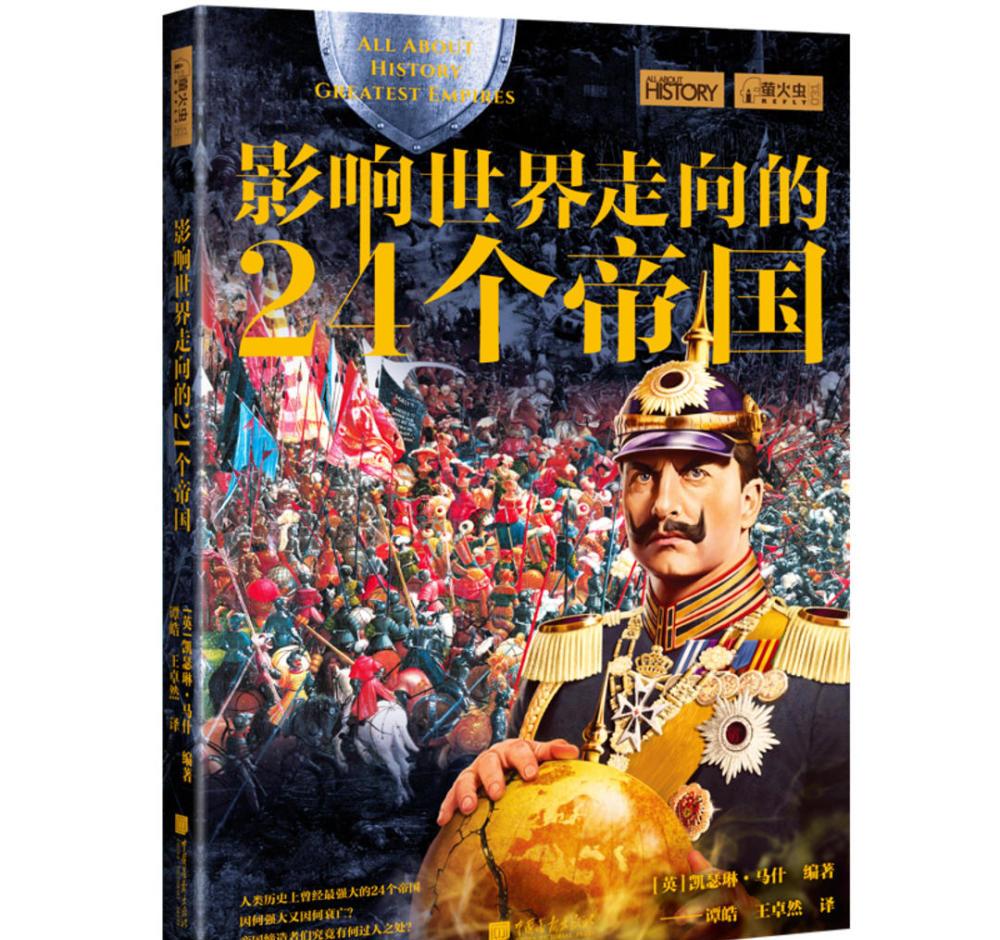Why did the 24 most powerful empires in human history rise and fall? What is so great about the founders of the Empire? Starting from the Akkadian Empire, the world's first empire founded in 2334 BC, this book chronicles the rise and fall of 24 empires that influenced the direction of the world in time and space. In the book, we will follow the author in exploring the Assyrian Empire with the most powerful army in the Middle East in the Iron Age; the Spaniards and Portuguese who conquered the New World for the first time, the Roman Empire that dominated the Mediterranean world; and the Empire that drove the Golden Age of Islam. We will travel to Central America to get up close and personal with the Aztecs and Incas; we will also see the North Sea Empire created by Viking warriors in the snow-covered land...

Recently, China Pictorial Publishing House launched the 31st book of the "Firefly Book Series" of light reading and interesting history: "24 Empires That Influenced the Direction of the World", which runs through the 5,000-year history of global empires and shows the rise and fall of 24 empires in a panoramic way.
In the book, the author summarizes the distinctive characteristics of each empire itself: the Assyrian Empire had the most powerful army in the Middle East in the Iron Age; the Abbasid Dynasty created a golden age of outstanding achievements in philosophy, science and mathematics; the Peacock Empire, although it ruled for only more than a hundred years, was one of the most populous countries in ancient times; the word "Rome" was evaluated as "neither sacred nor Roman, nor imperial"; the self-made, possessive How the 700-year-old Ottoman Empire swept across three continents and much more.
In addition to a comprehensive introduction to the rise and fall of empires, the book also introduces many monarchs who founded and fell into empires and their means of rule. We will read about the battles of Cyrus the Great and his "Persian undead"; we will understand how Alexander the Great's crazy path from enlightened monarch and hero of the country to a god tyrant began and ended. We can see the inheritance of the Roman "Five Wise Emperors" and the brutality of Nero, and how Pachacuti, the Inca "Great Earthquake Shaker", maintained the loyalty of the people to him.
In the book, we can not only see many grand scenes, but also learn some interesting little knowledge. For example, who first invented such things as trousers; when did the British start to decorate Christmas trees; how the "fallen" Emperor Justinian was left behind by his wife when he wanted to flee the capital; why did the Sultan's soldiers have to tie a spoon to their heads... These slightly humorous, seemingly tiny points of knowledge flash in the history of the evolution of empires full of iron and blood, intrigue and power, and to a certain extent, they also dissolve some of the heaviness brought about by reading big history.
In the binding design of the book, the book is printed in full color, and the book contains hundreds of exquisite illustrations. In addition to the portraits of the monarchs of various empires, there are also cultural relics unearthed in various periods, famous buildings of the empire, schematic diagrams and battle plans of world-famous wars, and paintings by famous painters, so that readers can most intuitively understand the general situation of the empire.
War and peace, rise and decay, the art of monarchical rule, the evolution of civilization, the secrets of many empires, and the crux of decay are vividly and exhaustively presented in this book. It is believed that readers can expand their horizons through this book, understand all the empires that have influenced the course of the world, and can discover laws and inspirations from distant history. Yangzi Evening News/Purple Cow News reporter Huang Yanwen